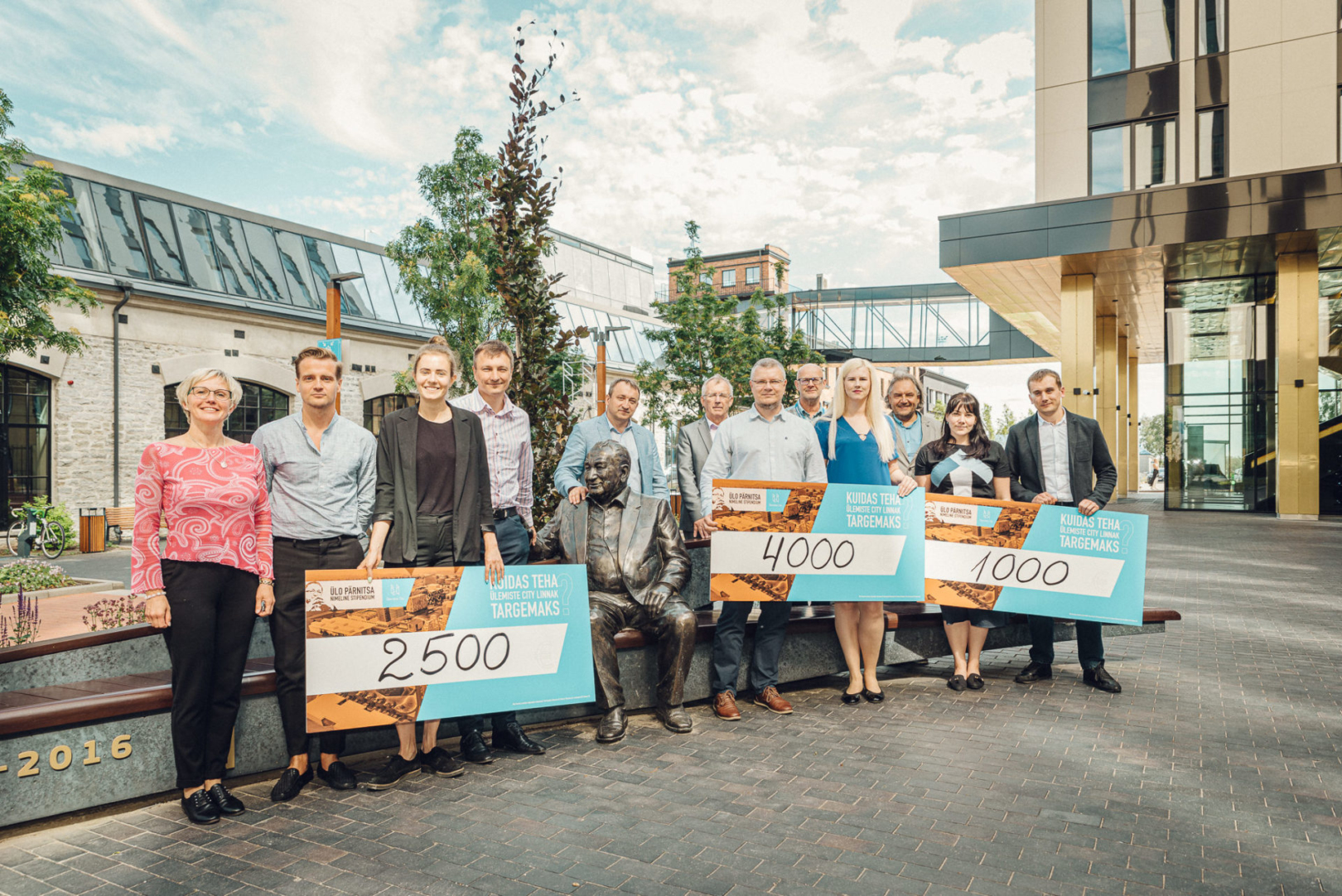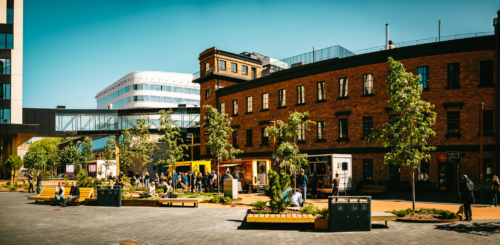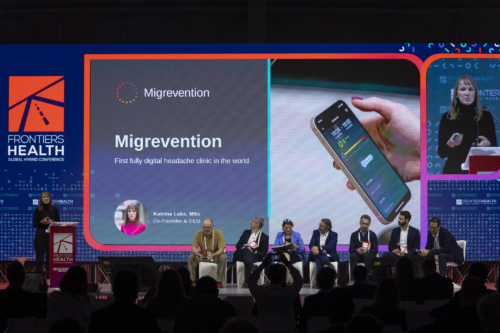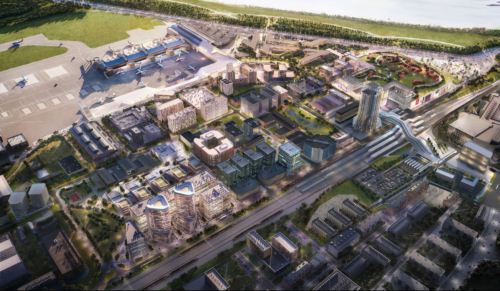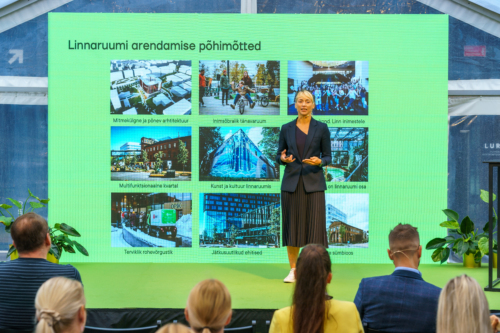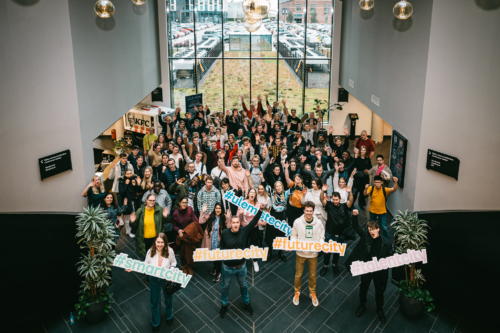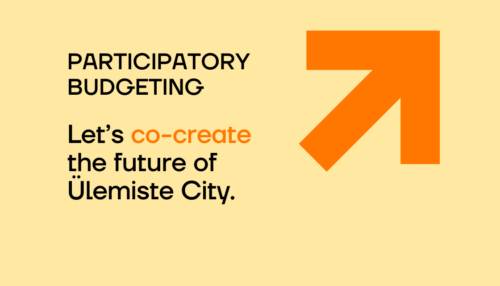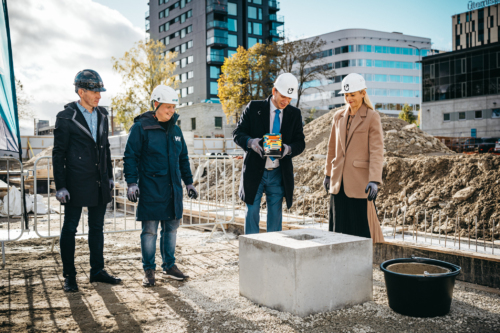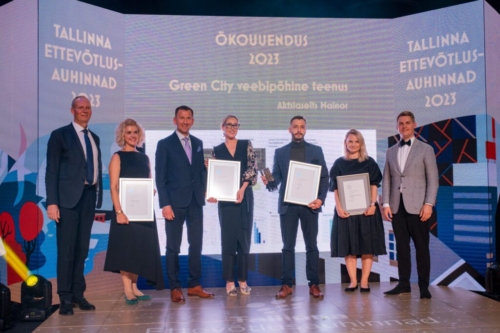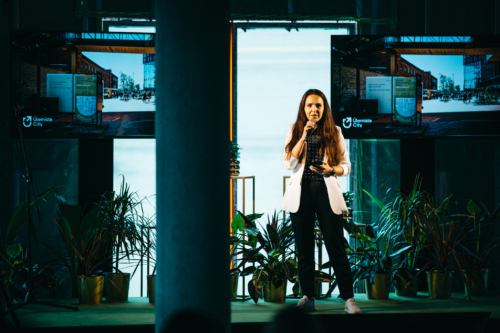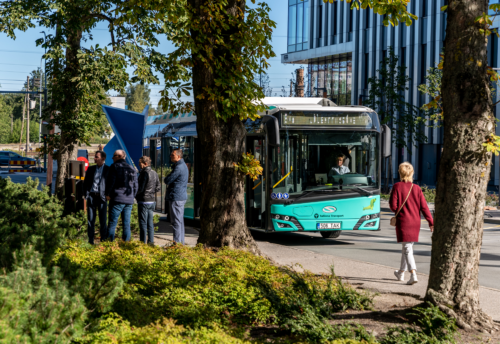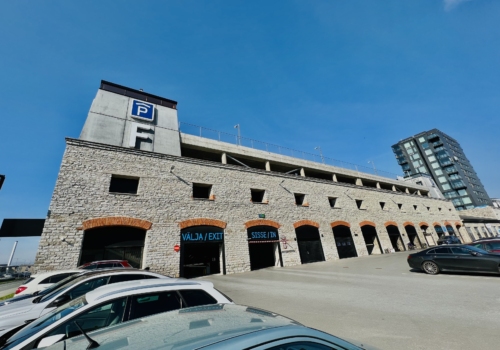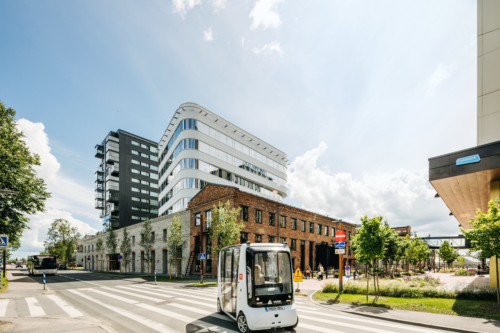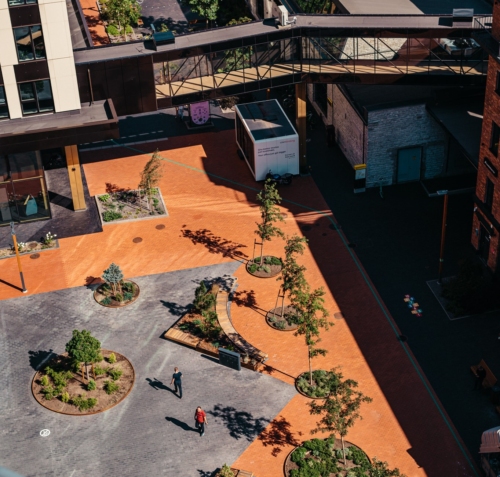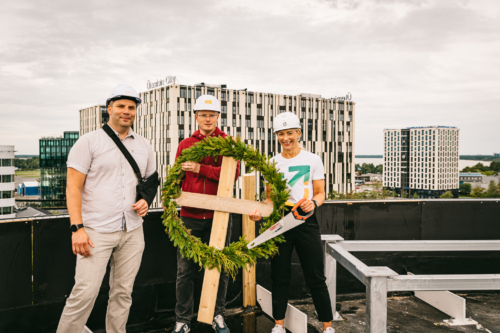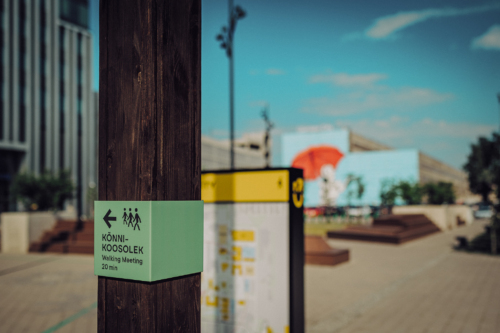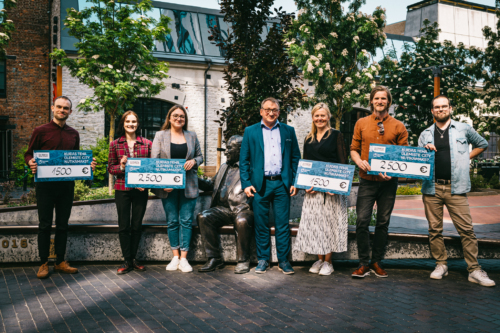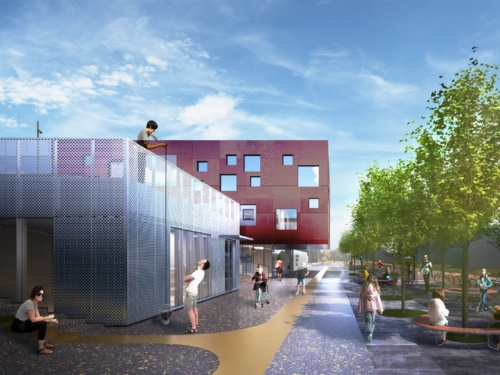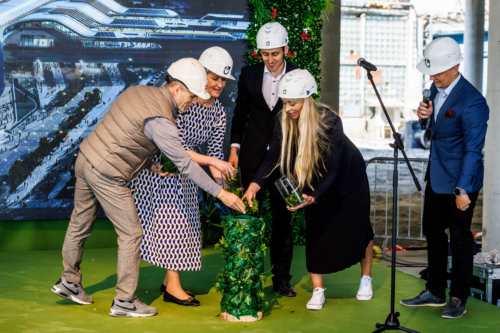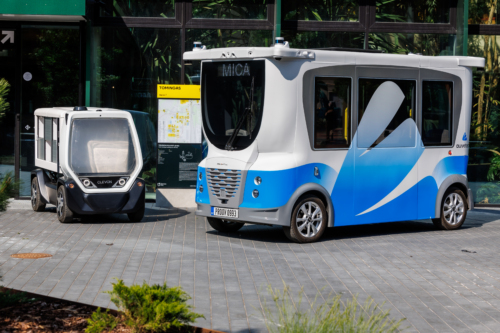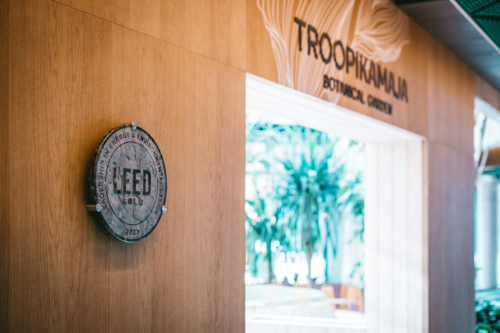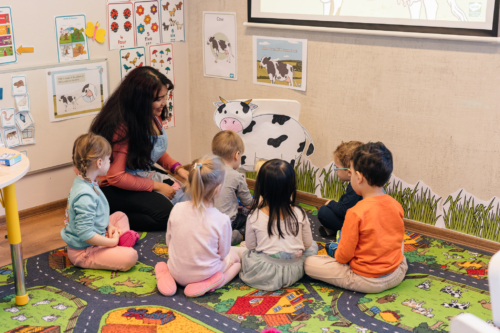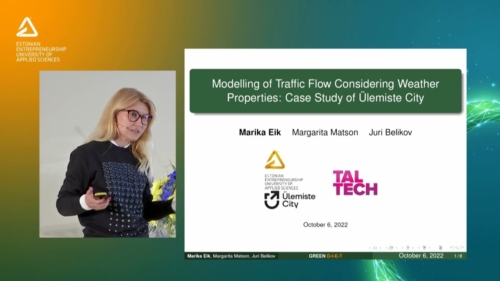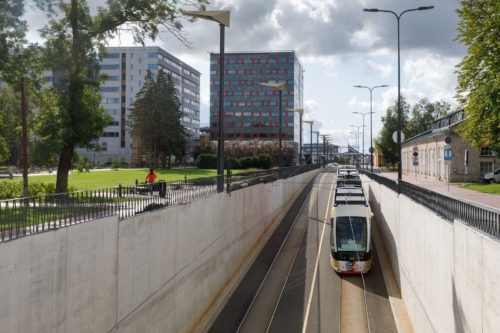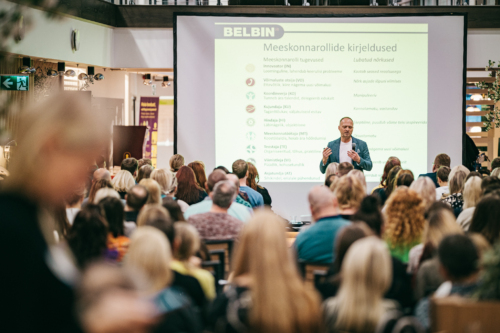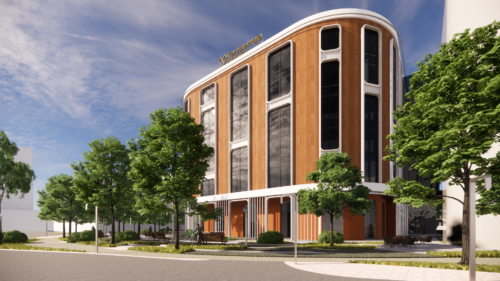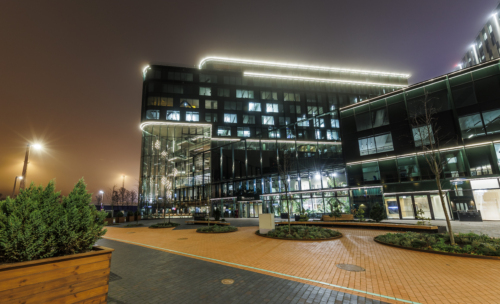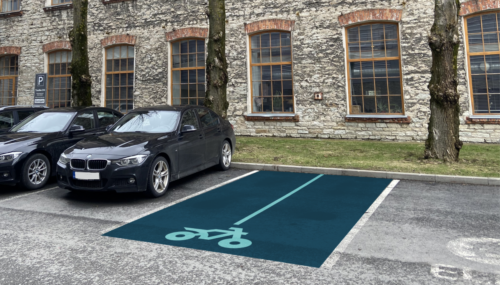The Ülo Pärnits scholarships were awarded at Ülemiste for the second year in a row
Yesterday, the developers of Ülemiste City (Mainor Ülemiste and Technopolis Ülemiste) and AS Mainor, Kristosten OÜ in cooperation with the Tallinn University of Technology (TalTech) Development Fund, heard the presentations of student works and announced three student works that were awarded scholarships within the scholarship fund and competition named after Ülo Pärnits, which was organised for the second year in a row.
This year, it was possible to apply for a scholarship in two categories: the Ülemiste City scholarship for Bachelor’s and Master’s theses competition, and the scholarship for the Ülemiste City innovation award competition. The Chairman of the Supervisory Board of Mainor AS, Guido Pärnits, observed that all works were strong and practical this time, and that the conclusions and recommendations to developers of the campus that originated from the student works will certainly be taken into account in part.
The European square, or welcome to Estonia
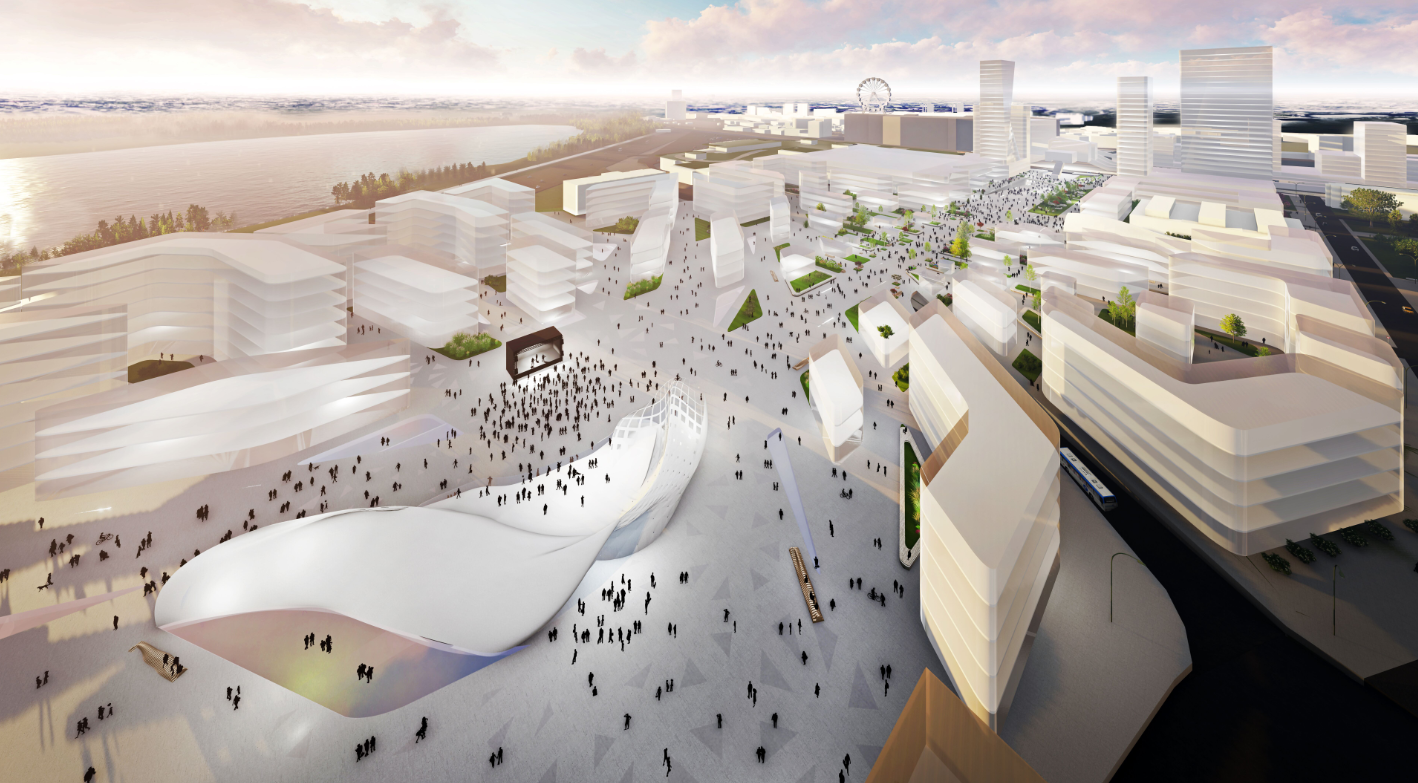
In the Ülemiste City scholarship for Bachelor’s and Master’s theses category, student Lisanna Remmelkoor of the TalTech School of Engineering made it to the final round – she presented her Master’s thesis ‘European Square – European Gateway to Estonia’. With the decision of the Supervisory Board of Mainor, the work was awarded the EUR 2500 scholarship. The work has been created based on a thorough theoretical part, interviews and data analysis; it is a true spatial vision of creating the so-called European gateway at Ülemiste City.
In her work, Remmelkoor was guided by the expansion plans of Tallinn Airport (the plan to increase the capacity by two times) as well as the upcoming construction of Rail Baltic and the Fin-Est tunnel in the specified region. The two large joint terminals would be connected to Tallinn Airport – the European Gateway would be a suitable entry point for visitors of Tallinn and Estonia.
The author has reviewed the visions of Tallinn Airport, Tallinna Linnatransport, and Zaha Hadid Architects, and offers a solution of her own. The European Square area would be bordered by Peterburi tee street in the north, T1 Mall of Tallinn and the Ülemiste Shopping Centre in the east, the Tallinn Airport car park in the south, as well as the residential complex at Peterburi tee and the airport-side buildings of Ülemiste City in the west.
According to Remmelkoor, navigating in the square must be smooth, quick and logical, attractive to people, and create a good image of the city and the country. To illustrate all of this, the author had also prepared a spatial model and illustrations. To facilitate navigation, several underground car parks and the development of a system of traffic corridors have been planned into the work. According to the supervisor of the work, Andrus Kaldalu (Mainor Ülemiste), the completed work is a great input for the Smart City professorship and to the mobility study of the Tallinn Urban Planning Department.
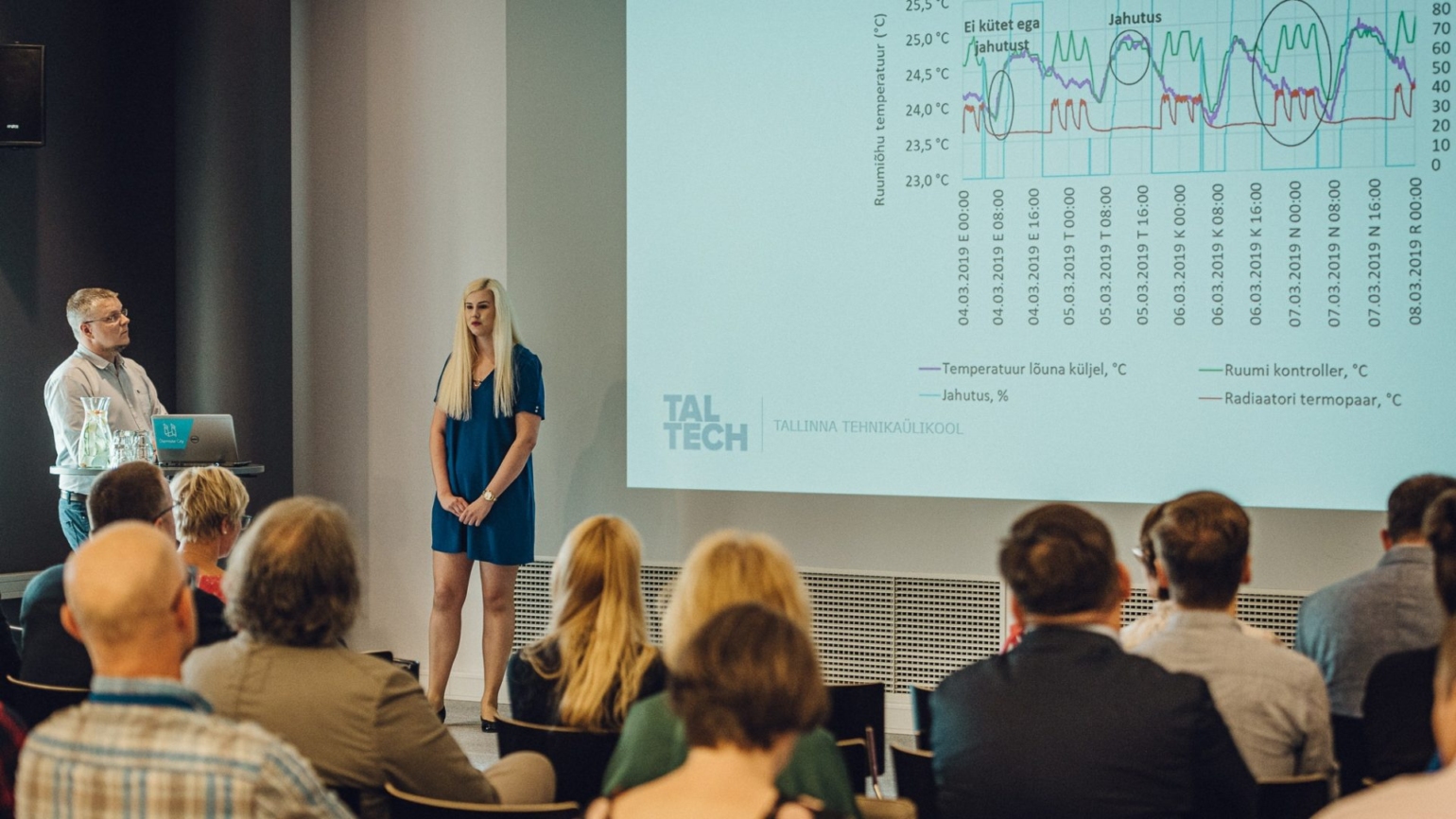
Indoor climate is more important than we can imagine
First place and the EUR 4000 scholarship in the Ülemiste City innovation award competition was awarded to the work ‘New business opportunities relying on the data collected within the Ülemiste City campus’. In reality, the work consisted of two Master’s theses created by separate authors, and was essentially a follow-up to the student work that began last year and was also awarded the scholarship back then.
Therefore, the work was divided into two subtopics: ‘Thermal Comfort Analysis in Office Buildings in Tallinn Ülemiste City’, by Dagmar Teppe, a final-year Master’s student of energy efficiency at TalTech; and ‘Analysis of electricity consumption on standard floors of office buildings in Tallinn, Ülemiste City’, by Andrei Engels, also a final-year Master’s student of energy efficiency at TalTech. Both works had collected data from and were based on the commercial buildings at Ülemiste City: the Ernst Öpik house (Valukoja 8) and the Bernhard Schmidt house (Lõõtsa 5). Teppe’s work focused on indoor temperature, its conformity to the norms in the project and to the wishes of people working in the building every day.
It became apparent that people’s wishes regarding temperatures do not actually match the standard values used in designing the buildings, and the author of the work posed the question of whether the opinions of people living or working in the buildings every day should be followed, or if the so-called standard values that may not be the most liked by people should be followed. In principle, higher satisfaction with the indoor climate would mean that people are more content making their work performance higher – this is an issue to think about for every company and owner of a commercial building.
Engels also analysed energy consumption in the same buildings, compared it to current typical use profiles, and highlighted significant differences between actual use and the methodology used in design and construction. For example, actual consumption shows that people work longer hours than the energy consumption forecast expects. Engels’ work also shows that Estonians tend to work during weekends – this is something that is not considered during the design process. The work also showed that a more expensive light does not necessarily mean lower energy costs, and that it is important how the lighting solution has been utilised: if there is one sensor per four people, it may mean that if three people are at lunch, their workplace is only lit because of one person.
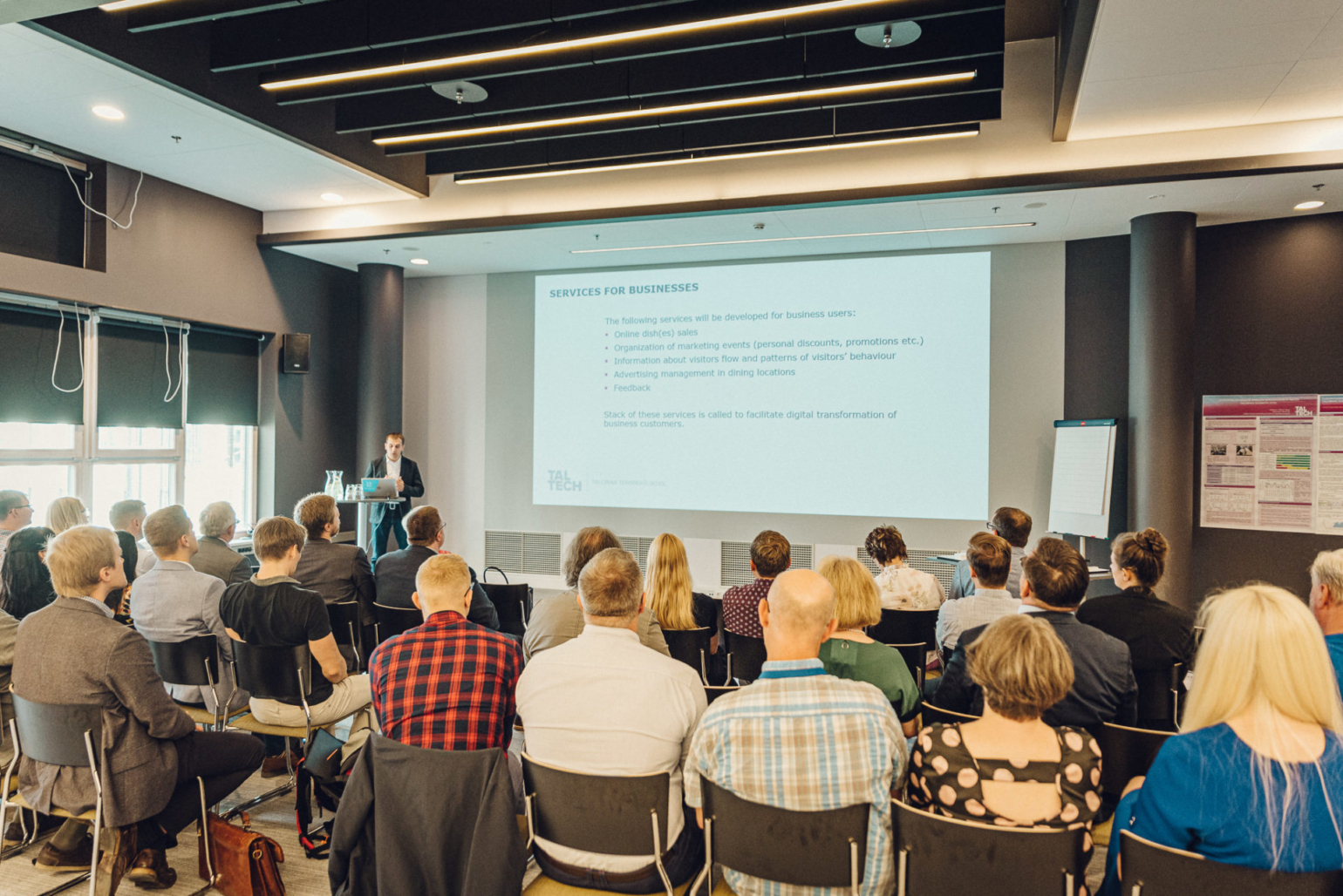
The smart city service platform of Ülemiste City
The second presentation that made it to the final round of the innovation award was the work of Alexander Kosenkov, a student of information technology at TalTech, titled ‘Ülemiste Smart City Digital Services Platform’. In his work, Kosenkov highlighted today’s clear shortcomings in the actual emergence of smart cities, and provided a vision for using services characteristic of a smart city at Ülemiste City as a technological platform. The project mainly focuses on catering establishments located at the Ülemiste campus. The aim is to reduce food queues during lunch and to create a platform, based on which it is possible to build new services and solutions characteristic of a smart city, step by step. With the help of the
services, the end users, i.e., the inhabitants and workers of Ülemiste City, would immediately get an overview of the queues, menus, nutritional information, and feedback of catering establishments. The platform would also be useful for companies since it would enable events to be organised better, to collect anonymous data about customer traffic, and advertise at catering establishments.
The larger vision of the project and its potential includes integrating it into other services, relying on the aforementioned Ülemiste City Digital Service Platform. The author had communicated with and also highlighted several parties interested in the project, among them, the Estonian Ministry of Social Affairs, the Tallinn University of Technology (TalTech) and the Tallinn Social Welfare and Health Care Department. For Kosenkov’s digital services platform, the author was awarded a EUR 1000 scholarship by the decision of the Supervisory Board of Mainor.
The next scholarship fund competition named after Ülo Pärnits will already be announced in September of this year, on the website of the TalTech Development Fund.
